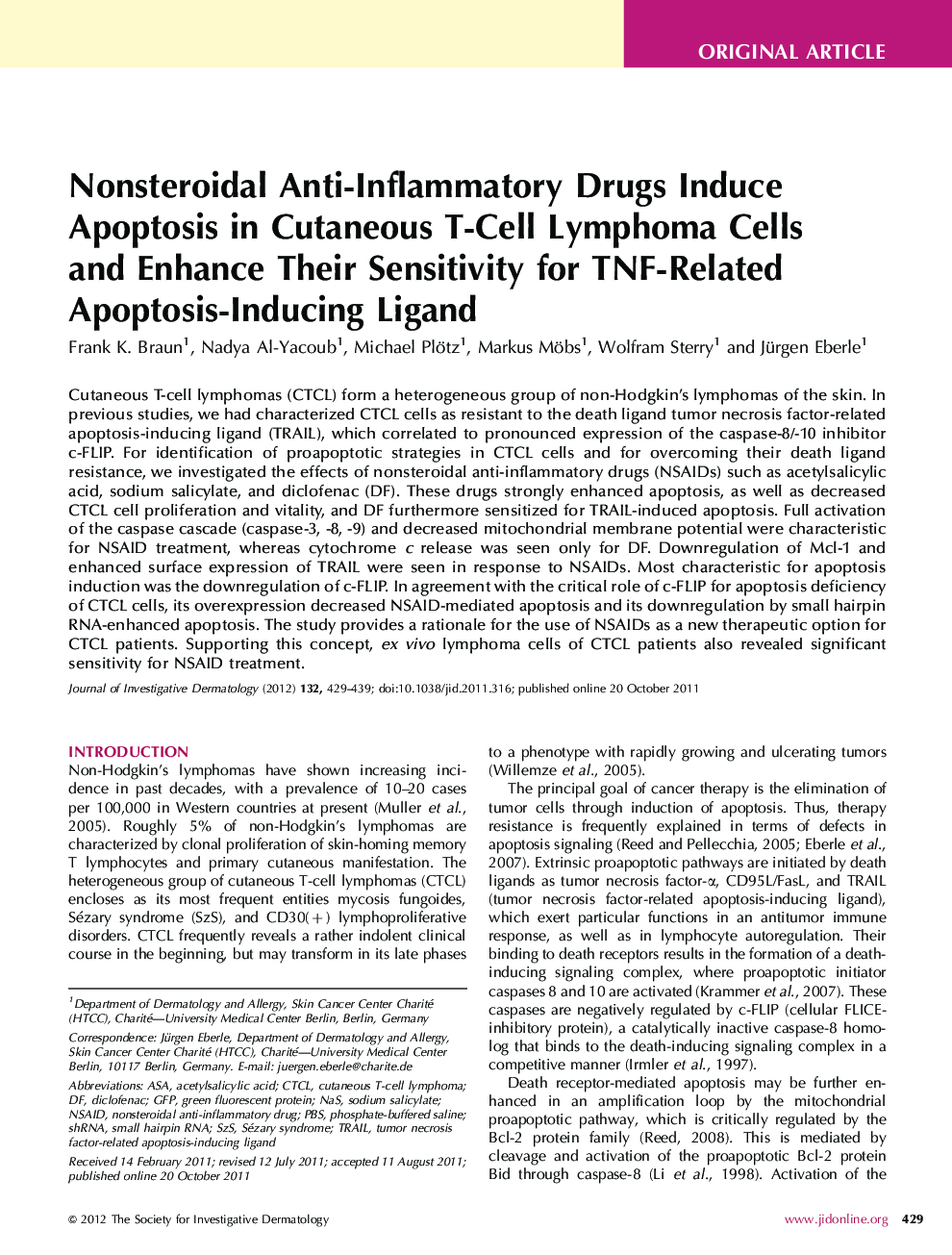| کد مقاله | کد نشریه | سال انتشار | مقاله انگلیسی | نسخه تمام متن |
|---|---|---|---|---|
| 3216669 | 1203578 | 2012 | 11 صفحه PDF | دانلود رایگان |

Cutaneous T-cell lymphomas (CTCL) form a heterogeneous group of non-Hodgkin's lymphomas of the skin. In previous studies, we had characterized CTCL cells as resistant to the death ligand tumor necrosis factor-related apoptosis-inducing ligand (TRAIL), which correlated to pronounced expression of the caspase-8/-10 inhibitor c-FLIP. For identification of proapoptotic strategies in CTCL cells and for overcoming their death ligand resistance, we investigated the effects of nonsteroidal anti-inflammatory drugs (NSAIDs) such as acetylsalicylic acid, sodium salicylate, and diclofenac (DF). These drugs strongly enhanced apoptosis, as well as decreased CTCL cell proliferation and vitality, and DF furthermore sensitized for TRAIL-induced apoptosis. Full activation of the caspase cascade (caspase-3, -8, -9) and decreased mitochondrial membrane potential were characteristic for NSAID treatment, whereas cytochrome c release was seen only for DF. Downregulation of Mcl-1 and enhanced surface expression of TRAIL were seen in response to NSAIDs. Most characteristic for apoptosis induction was the downregulation of c-FLIP. In agreement with the critical role of c-FLIP for apoptosis deficiency of CTCL cells, its overexpression decreased NSAID-mediated apoptosis and its downregulation by small hairpin RNA-enhanced apoptosis. The study provides a rationale for the use of NSAIDs as a new therapeutic option for CTCL patients. Supporting this concept, ex vivo lymphoma cells of CTCL patients also revealed significant sensitivity for NSAID treatment.
Journal: Journal of Investigative Dermatology - Volume 132, Issue 2, February 2012, Pages 429–439